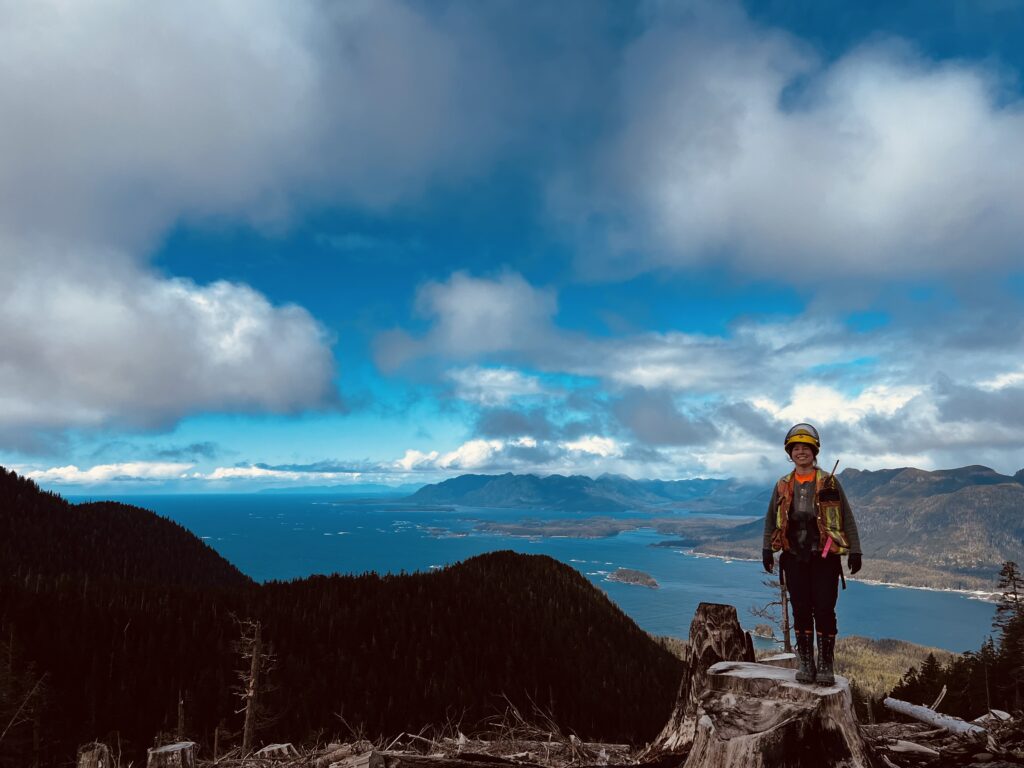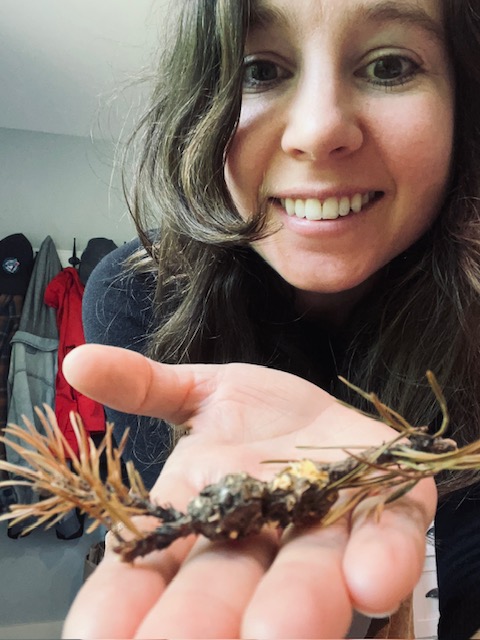Current & Future Forester: Funding for Post-Secondary

Project Title: Current & Future Forester: Funding for Post-Secondary
Recipient: Chelsea Southern
Region: Vancouver Island/Coast
Awarded Amount: $14,974
Project Period: 2025
Description: Funding has been awarded to support post-secondary studies in the Coastal Forest Technology program at North Island College. Upon completion, the recipient will earn a diploma and the title of Trainee Forest Technologist (TFT). Many of the courses in the program focus on silviculture, building upon the recipient’s prior experience in the field. This expanded knowledge will contribute to their future goal of supporting a community forest that reflects the values of the Silviculture Innovation Program.
Halfway Reporting:
The following is based on halfway reporting by the grantee.
August 11, 2025

Silviculture Surveys: Learning in the Field (Photo by Dan Marshall)
My name is Chelsea, and I was an assistant forester for a few years before I decided to go back to school to attend North Island College’s Coastal Forest Technology program. The Silviculture Innovation Program (SIP) is generously supporting my education. In the following paragraphs, I have shared some of my learnings that relate to SIP’s values over the past few months while working in the field.
After finishing my first year of the Coastal Forest Technology program at NIC, I returned to the field, where I swiftly realized the many hours I spent at my laptop as a student left me with a body that was no longer in forester-level shape. Luckily, as any industrial athlete knows, this problem was short-lived as my schedule filled up with field days. In the upcoming weeks and months, I found myself aligning with the values and goals set out by the Silviculture Innovation Program as I practiced sustainable silviculture, expanded my silviculture knowledge, and built trust and relationships within the silviculture community.
Building relationships in the silviculture community is made easier by a lot of travel and time spent together. In other words, long truck drives equals bonding. I discovered another way to build relationships with foresters, which is via pests. Before I began working in the field again, I was assigned homework over the spring and summer, so I was in full procrastination mode. This homework involved finding tree pathogens and diseases, abiotic damage, insects, and examples of animal damage. To my surprise, my co-workers were unbelievably excited to help with my homework, because it involved finding pests. My pest collection became a great way to bond with other foresters. After returning from spinning plots, we would excitedly share samples and pictures of various pests with one another, which was a great way to further build trust and relationships within the silviculture community.
The pest assignment bonding led to opportunities for me to practice sustainable silviculture and expand upon my ecosystem and biodiversity knowledge that I learned during my university studies. I had the opportunity to assess a post-harvest block and identify the site by digging soil pits and identifying the surrounding vegetation and landscape characteristics with a Registered Forest Professional. These activities led to sustainable silviculture, because we had a rationale for prescribing planting a variety of tree species, which ultimately will support the biodiversity of the site.
One of the most interesting field days I experienced started with a failed fill plant and ended with a biodiversity win. Long story short, we went to a site that was pre-dominantly one tree species that had been hit with a pest. This, unfortunately, was the second time the site was planted. A more diverse selection of tree species could mitigate these pest issues and keep the area stocked. As a result, we were able to convince the powers at be to plant more species and to trial some experimental fertilization. I have not had opportunities to prescribe fertilization, much less fertilization that is being researched and trialed, so this was very exciting. For myself and my co-worker, this was not only a win for biodiversity, but it was also a great learning experience for myself and another great bonding experience within the silviculture community.
At the time of writing, it is August 2025. My next steps are returning to NIC full time in September, where I will receive my Coastal Forest Tech diploma by April 2026. Prior to reflecting, I felt like I would not have much to share with SIP. Post reflection, I feel like I have progressed in my professional journey over the last few months and for that, I am grateful for the learning opportunities I have received from foresters in the silviculture community, and for the chance to share my experiences within the broader community. Might I suggest that at the next Innovative Silviculture summit, if one needs an icebreaker activity or is feeling awkward in a social situation, bring a pest sample and discuss. It is a guaranteed hit!

Me, Myself, and Some Gall Rust (Photo by Chelsea Southern)
